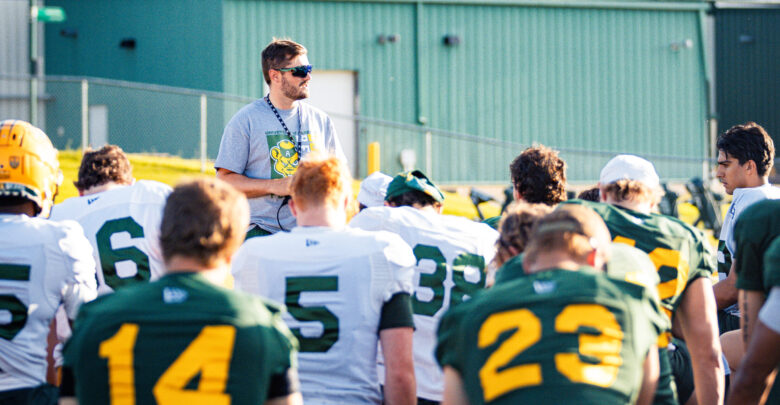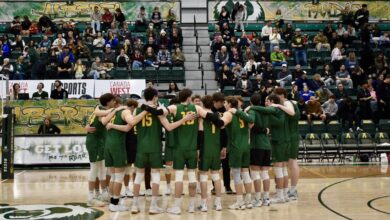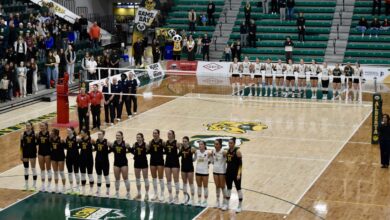Golden Bears Football season review: What did we learn?
Golden Bears look to turn growing pains into playoff push in 2026.
 University of Alberta
University of Alberta Despite a 1-7 record, the University of Alberta Golden Bears showed hints of greatness.
In Stevenson Bone’s first season as head coach, the Golden Bears spent most of the fall walking the line between “Playoffs-bound” and “Next year is our year.” Four one-score losses, and a handful of late-game chances. The record may not show it, but this football team was competitive against every team in Canada West. This includes a tight game against the Hardy Cup winning University of Saskatchewan Huskies.
“It’s disappointing in the sense of our record,” Bone said. “But I’m not disappointed in the way that our players fought and showed up consistently week to week.”
That part is true. Even at 0-4, the Bears kept swinging with everything they had. They pushed top-ranked opponents into tight finishes. They found life in the passing game. The defence, shaky early against the run, settled in and turned into one of the conference’s better units after mid-season.
However, in a short season, “almost” piles up quickly.
“Ultimately, you can’t start 0-4,” Bone said. “No matter how you finish, you have to start a little bit better than that.”
Changing identity
The Bears’ challenges began almost immediately.
Week one against Saskatchewan, the Bears took heavy damage on the offensive line. Starters dropped, rotations shuffled, and at one point, tight ends were snapping the ball. That early hit changed everything.
“When you have significant injuries on the offensive line, you’re going to struggle in the run game,” Bone said. “You go to where your strength is.”
Alberta leaned into the air. It worked more often than not. The Bears finished at the top of Canada West in passing metrics, moved the ball efficiently at times, and showed flashes of a dynamic offence when the protection held.
On defence, the group quietly rebuilt itself.
Even without any returning starters in the secondary, the unit still finished as an elite passing defence in the conference. The run defence, which showed early struggles, tightened up in the second half of the season and stopped allowing explosive plays.
“We just played better, sound football,” Bone said. “Some of the schemes changed, and the guys up front started making more plays. The secondary deserves a lot of credit.”
The frustrating part: the major improvements came while the losses were already tallied.
Finishing close did not earn them a playoff spot. It did show progression under a first-year head coach.
“I felt like in the second half of the season, our guys played harder than the other team,” he said. “Against [University of British Columbia], Regina, Calgary. That urgency is what you really want.”
Saying goodbye to veterans
This year was also the end of an “era”.
The Bears loaded up one more time with a core of veterans: names like Chevy Thomas, Kolby Hurford, Carter Kettyle, Ope Oshinubi, Cody Neumann, and a stacked linebacker group. The plan was simple: one last run with that group before the roster turned over to a younger core.
“You owe it to those guys to take a crack at it,” Bone said. “We weren’t going to go full youth movement and just hand it away.”
Now that group is gone or moving on, and the roster naturally gets younger. The middle of the roster is thin. First and second year players start to become the core.
Next year’s team will not look like a finished product. Bone is realistic about that.
“I don’t expect us to sit there and be world beaters in my second year,” he said. “But I do expect us to improve, be more competitive, and push for a playoff spot.”
The message in the room is shifting too. More ownership. More responsibility on the young core that played real snaps this season.
“Those guys now have to be the leaders,” Bone said. “It starts in the weight room, in study hall, in how they show up every day.”
Recruiting local
Fans should be optimistic about who’s coming next.
The Bears have already secured double-digit commitments, many from Team Alberta’s Canada Cup-winning roster. The focus is clear: Alberta and B.C. kids, plus established pipelines like Grande Prairie, Spruce Grove, Calgary, and Edmonton’s top programs.
“So far we’ve gotten 12 commitments,” Bone said. “We’re on it. We’re trying to get 25 to 30 for next year. Alberta and B.C. are definitely our focus.”
At linebacker, even with impact players leaving, Bone is confident. He points to young returners and top recruits as pieces that can grow quickly in the system. On offence, running back Seth Poelzer is circled as a future star. At quarterback, the starting job will be decided after a full spring of competition.
In other words, the foundation year is done. Year two is about turning lessons into wins.
“How do I define success in year two?” Bone said. “Making the playoffs. Winning more games than we did this year. Playing with that urgency every week.”
He is not selling shortcuts. He is asking for a little patience, and maybe a bit of faith.
“It’s not built in a day,” he said. “But if these classes keep developing, a few years from now this could be the group.”
For now, the Bears are what their record doesn’t quite show: young, bruised, but building.




